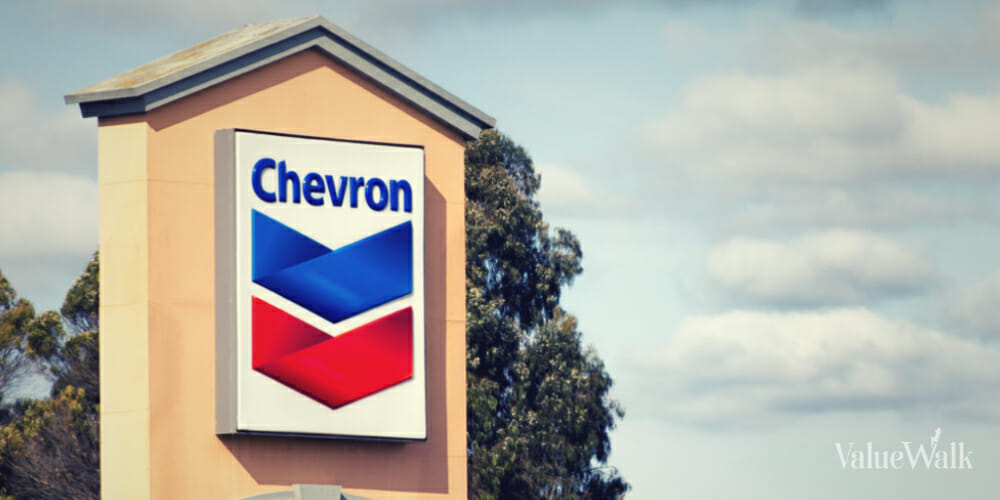Chevron Corporation is a giant oil and natural gas producer and refiner. The company is in the Dow Jones Industrial Averages (DJIA). Also, it is on the list of Dividend Champions and Dividend Aristocrats because of its 36-year streak of dividend increases.
Chevron had an excellent year in 2022 because of the high oil prices. Although prices have declined, Chevron will likely have another solid year in 2023. Moreover, the dividend yield, low valuation, and low leverage make Chevron a long-term buy.
Overview of Chevron
Chevron Corporation (NYSE:CVX) was founded in 1879 and is headquartered in San Ramon, California. Today, it is one of the world’s largest integrated oil and gas majors. The firm has grown organically and by acquisition. The two most recent additions, Puma Energy and Noble Energy expanded the company’s geographic footprint and added to its oil reserves.
Today, Chevron operates in two segments: Upstream and Downstream. The Upstream segment explores, develops, produces, and transports crude oil and natural gas. The Downstream segment refines crude oil into petroleum and petrochemical products.
Total revenue was $244,302 million in 2022 and the trailing twelve months.
Selected Data for Chevron (NYSE)
|
Ticker |
CVX |
|
Market Cap |
$320.42 billion |
|
Stock Price |
$169.12 |
|
Dividend (FWD) |
$6.04 |
|
Dividend Yield |
3.57% |
|
P/E Ratio (FWD) |
11.78X |
Source: Data from Portfolio Insight (as of April 23, 2023)
Chevron’s Dividend and Dividend Safety
Chevron has a long history as a dividend growth stock. According to Dividend Radar, the oil and natural gas giant has raised the dividend for 36 years in a row. H
ence, the stock is both a Dividend Aristocrat and a Dividend Champion. Importantly, despite low oil prices during the COVID-19 pandemic, Chevron did not engage in a dividend cut or elimination. Unfortunately, the same cannot be said about many other oil and natural gas businesses.
Currently, the dividend rate is $6.04 per share; the forward dividend yield is ~3.57% at the current share price. This value is below the average for the past 5-years because oil prices are high, and investors have bid up the stock price. But it is more than double the S&P 500 Index’s average yield.
Chevron has outstanding dividend safety metrics from the view of earnings, free cash flow (FCF), and debt.
The forward dividend payout ratio is conservative at only ~30.2% based on adjusted earnings. This number is derived from the $6.04 annual payout and consensus earnings of $14.35 per share. Our target percentage is 65% indicating Chevron’s dividend safety is high and future growth is secure in the near future.
In addition, the dividend is safe from the standpoint of FCF. In the past twelve months, FCF was approximately $37,628 million. The dividend needed $10,968 million, resulting in a dividend-to-FCF ratio of around 29%. Our desired cutoff is 70%, and thus the dividend safety is again high.
Debt is not a key concern regarding dividend safety. At the completion of Q4 2022, Chevron held ~$17,901 million in cash, cash equivalents, and short-term investments on its balance sheet. In addition, the firm had $328 million in short-term, $1,591 million in current long-term debt, and $20,972 million in long-term debt. Consequently, debt is not a risk for the dividend with a minimum leverage ratio of 0.15X and interest coverage of more than 95X.
Moreover, Chevron’s AA-/Aa2 high-grade investment credit rating provides more confidence. The dividend quality grade is a ‘B,” but mostly due to the challenges of the pandemic from 2020 to 2021.
Competitive Advantage, Risks, and Valuation
As one of the largest oil and natural gas companies, Chevron has competitive advantages related to size and scale, leading to operational, supply chain, and cost efficiencies. Smaller companies will find it difficult to replicate these advantages.
In addition, because Chevron can spread costs over a more extensive base, it can remain profitable when oil and natural gas prices are lower. But since variable costs are marginal, Chevron’s revenue, income, and profits will surge when prices rise.
On the risk side, Chevron faces the possibility of oil spills or leaks. These can cause fines, lawsuits, and reputational damage. Most are probably minor, but the potential for a more significant, severe one exists. Similarly, refinery emissions, water pollution, and waste products are regulated and require permits. Hence, regulation and the associated expense are a risk.
Another risk is the rising demand for electric vehicle sales and the market share rise annually, which could potentially affect oil and gasoline sales.
Chevron is still undervalued despite the run-up in stock price from the pandemic bear market. At the current share price, the firm trades at an earnings multiple of approximately 11.8X, below the average for the S&P 500 Index. This is also on the lower end of the 5-year and 10-year ranges.
In addition, the dividend yield is higher than the market average. However, an investor must remember Chevron’s top and bottom lines are cyclical because of fluctuating commodity prices.
Disclosure: None.
Disclaimer: The author is not a licensed or registered investment adviser or broker/dealer. He is not providing you with individual investment advice. Please consult with a licensed investment professional before you invest your money.












